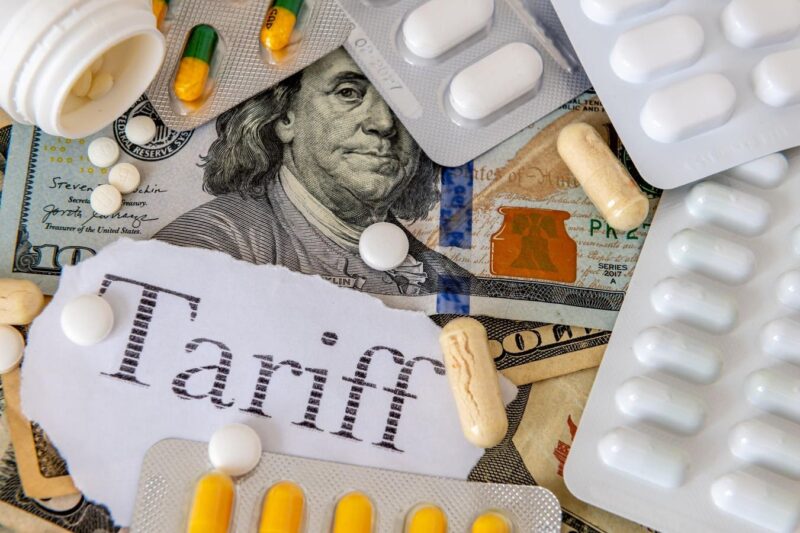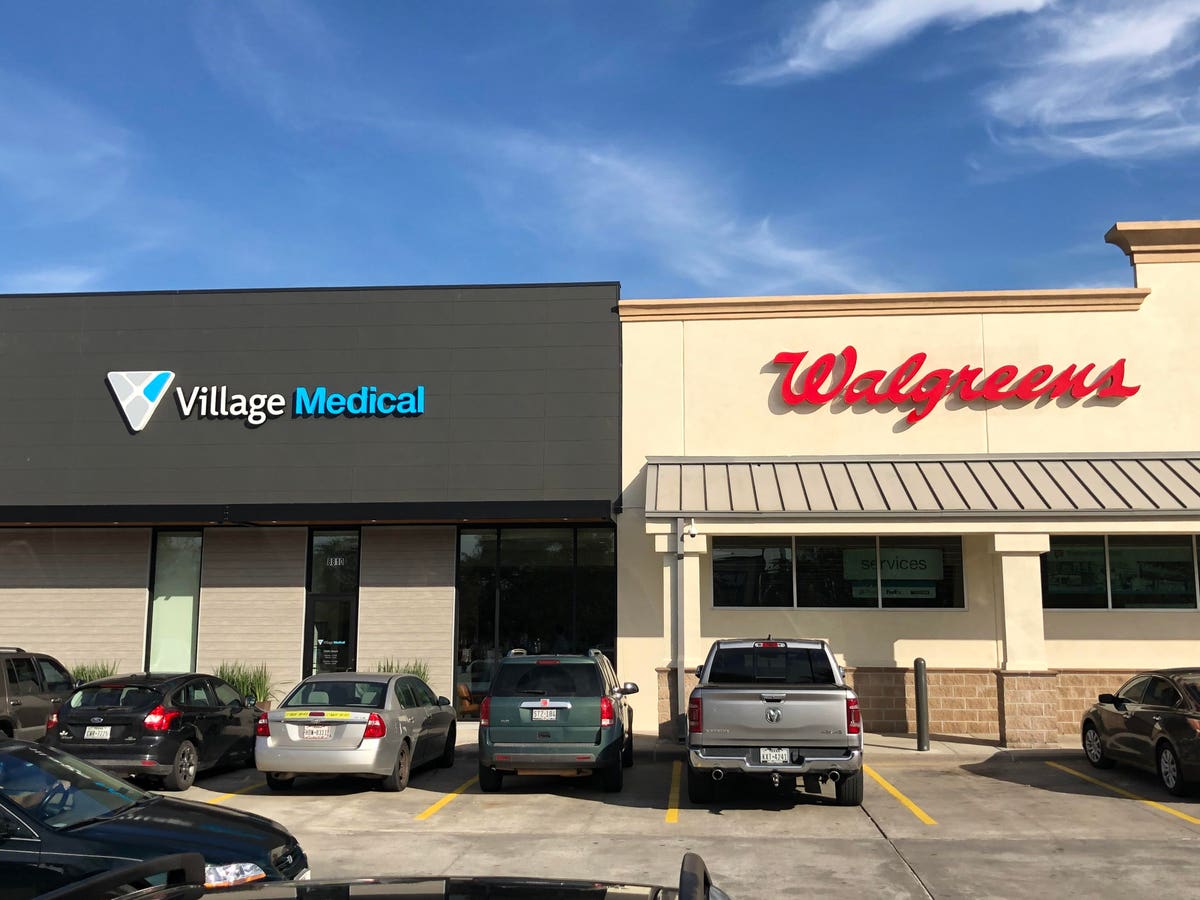A tariff on drugs could increase health care costs.
getty
Last Thursday evening, President Trump announced, through a post on Truth Social , that he is imposing a 100% tariff on imported drugs.
The announcement contained important caveats. The tariffs will be limited to manufacturers of “branded or patented” drugs unless the company “is building a manufacturing plant in America.” In the post, Trump defined “building” as “breaking ground and/or under construction.”
Restoring America’s drug manufacturing capacity is a worthy goal, but imposing a steep tariff is the wrong way to do it. Worse, Trump’s plan fails to address a much bigger problem – America’s near-total reliance on imported generic drugs.
The Industry’s Take
Alex Schriver, senior vice president of the prescription drugmaker industry group PhRMA, asserts that tariffs are at odds with Trump’s goals of bringing investments to America and lowering drug prices, as they’ll impose a greater financial burden on companies, according to STAT News.
In public comments to the government in May, Eli Lilly stated that tariffs will “deprive manufacturers of necessary capital to both innovate and invest in reshoring,” as they will need to redirect capital to cushion the impact of the levies, according to CNBC.
Despite these alarm bells, it’s not clear how disruptive the tariffs will be. Last July, the Trump administration agreed to lower the tariff rate for products imported to the U.S. from Europe, where many big multinational drugmakers have a significant manufacturing presence. In addition, a strategist interviewed by STAT noted that “All major players have some production presence domestically, and almost all have announced increased investment directly tied towards local manufacturing.” Whether these measures will or won’t reduce the risk faced by manufacturers depends on details that have not yet been announced.
What Analysts Think Of The Tariff
Experts in health policy worry that Trump’s drug tariffs could disrupt supply chains, drive up already high costs, and exacerbate drug shortages. After decades of offshoring drug production, few medications are wholly made in the USA.
Big drugmakers with the capital to initiate plant construction may be spared, but those that haven’t yet broken ground and smaller companies that rely on overseas manufacturers could be hurt, according to the Wall Street Journal.
In any event, rebuilding America’s drug manufacturing capacity won’t happen overnight. Few of the plants under construction will be ready to ship product before Trump’s second term ends.
Brand name drugs, due to their high expense, account for 90% of U.S. drug spending. However, 90% of the medications Americans rely upon are generic drugs.
getty
Trump’s Plan Ignores Generic Drugs
Trump’s tariff is focused on brand-name and patented drugs. Although these account for 90% of U.S. drug spending, they represent only 10% of prescriptions. The other 90% are “generic drugs,” which cost far less, and can be legally sold in the U.S. once a manufacturer’s patent protection expires. Many of these medications are essential to Americans’ health, including products used in intensive care units, operating rooms, transplant programs, cancer centers and outpatient clinics. Nearly all of them are manufactured overseas.
This has important implications for patients, health systems and our national security:
- Most drug shortages in the U.S. involve generic drugs, and mainly stem from concerns about drug quality and safety.
- Despite well-documented problems, most doctors and patients assume that one company’s generic drug is as safe as any other. As a result, few health systems and retail pharmacy chains independently verify the quality of their generic medicines before providing them to patients. Low cost is their only concern.
- Recognizing the difficulty of competing against countries with low labor costs and lax regulatory regimes, most U.S.-based drug manufacturers stopped making generic drugs and focused instead on developing lucrative brand-name drugs.
- Today, India and China dominate global production of generic drugs and the ingredients required to make them. As a result, the U.S. is vulnerable to supply shortages and embargoes.
Trump’s tariff plan ignores these challenges.
A Better Path
Rather than bludgeon the drug industry with tariffs and price controls, the administration could leverage a powerful force to renew U.S. drug manufacturing – market competition. Here’s how:
- Currently, HHS, the Veterans Health Administration, and our military health system purchase generic drugs based on the lowest price that is “technically acceptable.” Product quality is assumed but not independently verified. Shifting the standard to “best value,” based on product testing by ISO-accredited labs, would enhance patient safety, improve clinical outcomes and level the playing field for U.S. manufacturers. The modest expense should be covered by the industry, not taxpayers.
- When troubling results are found, they should be promptly reported to the FDA, which can use the data to prioritize overseas plant inspections and strengthen its regulatory oversight. The European Union employs this approach, and it works.
- To buffer the impact of future drug shortages or an embargo, the U.S. should quickly replenish its national strategic stockpile. The cost of the program can be reduced by transferring products to federal agencies for use before they expire. In exchange, the agencies would replenish the stockpile with newly purchased products. This arrangement would save taxpayers a substantial amount of money.
- The White House and Congress should also fully stock the Strategic Active Pharmaceutical Ingredients Reserve (SAPIR), a stockpile that President Trump established in his first term. Stockpiling APIs makes sense because drug ingredients are generally lower-cost and have longer shelf lives than the finished products they are used to make.
- Currently, only about 10 percent of the APIs by volume are made in the United States. To stimulate domestic manufacture of APIs and essential generic medicines, the federal government should sign long-term, performance-based contracts with innovative U.S.-based companies and technology hubs to replenish and maintain both stockpiles.
Collectively, these actions could inspire, rather than coerce, a renaissance in U.S. pharmaceutical manufacturing based on 21st-century technology. This would enhance the quality and safety of generic drugs, improve the resilience of our drug supply, improve patients’ health, and boost our economy.
The author has no financial relationship with any company mentioned in this commentary. His views are his own









